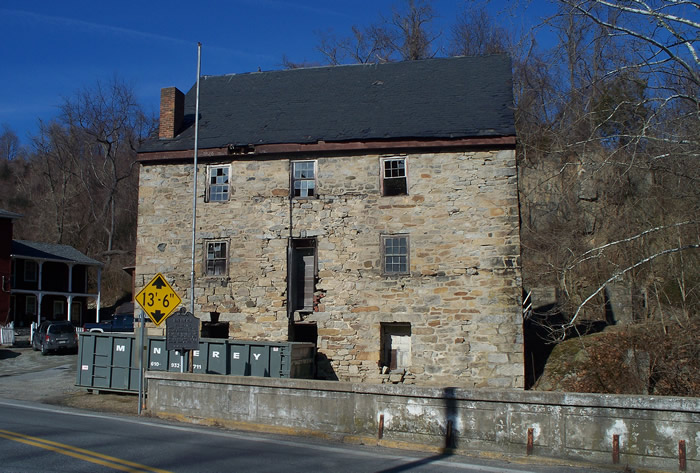
Rock Run Grist Mill-Md-07-07-04
Cecil Co. | Maryland | USA
Watersource: Rock Run.
Rock Run Grist Mill-Md-07-07-04
The mill is found on the corner of Main Street/Md 222 and Mill Street in the northern part of the town of Port Deposit very near the Susquehanna River.
View Larger Map

The 3.5 story stone mill, about 40'X 50' has a 50'X 15' stone 1.5 story addition attached to the back, all constructed of uncoursed rubblestone. GPS: 76' 7.32W, 39' 36.49N
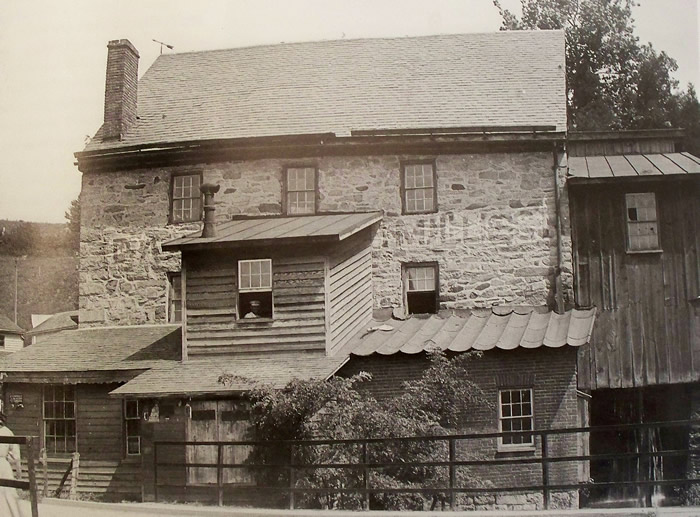
A digital copy of a Carson's Pharmacy, Port Deposit, Maryland postcard, postmarked 1908. Copy supplied by Bob Kinsey-02/17/2009 & Ted Hazen-02/27/2009.
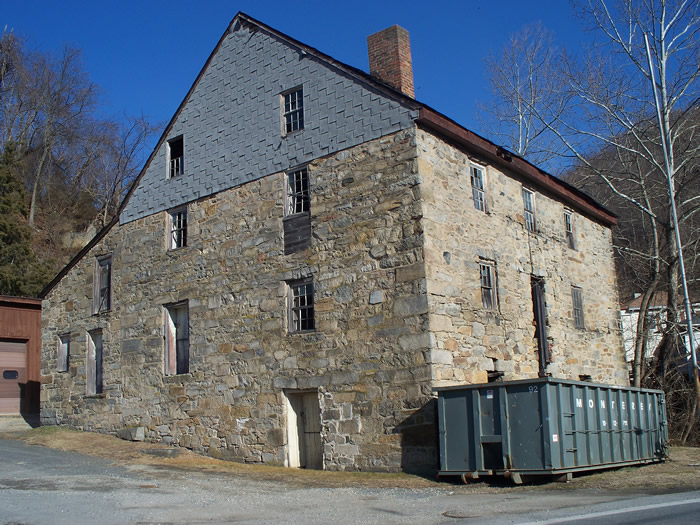
The mill is credited with having been built in 1725, and for certain, a successful milling business was going on by 1731.
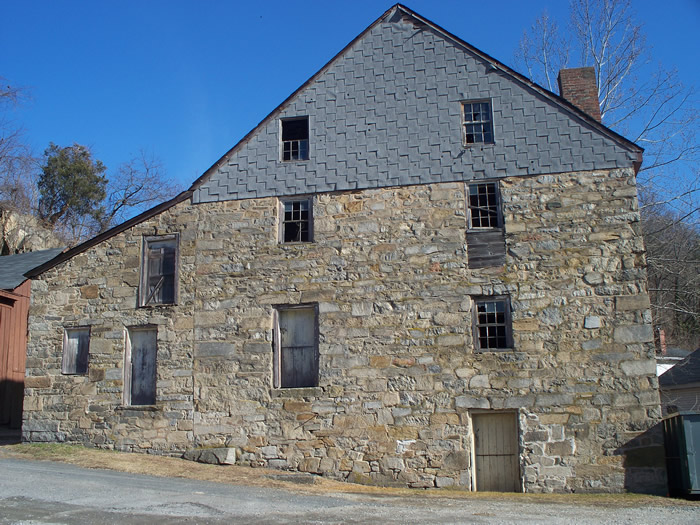
John Steel(e) built the mill, having also owned the Stump Mill, about six air-miles south at Perry Point south of today's Perryville and various others in the area.

This mill has probably replaced the earlier merchant mill of 1725/1731 and probably was in operation by c. 1797. A 'Merchant Mill' was a large mill that produced flour from grain purchased wholly from local farmers and processed, to be shipped as trade rather than grinding grain for local farmers with the miller keeping tenth as his pay.
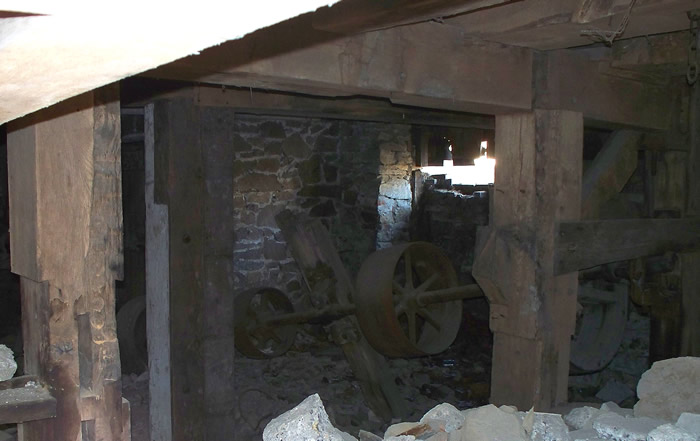
The mill was operated by John & Charles Fox in the late 1800's. It produced flour and a section was used to make early American Furniture. Then the whole mill was used as a brush factory.

The mill was used strickly as a flour mill again in 1900, then a brush factory again in 1905, and as a flour mill from 1912-1916. William Nesbit and Rumsey Smithson were later operators/owners. From 1916-1940, the mill operated as a sausage factory; making sausage, scrapple, and doing general butchering.
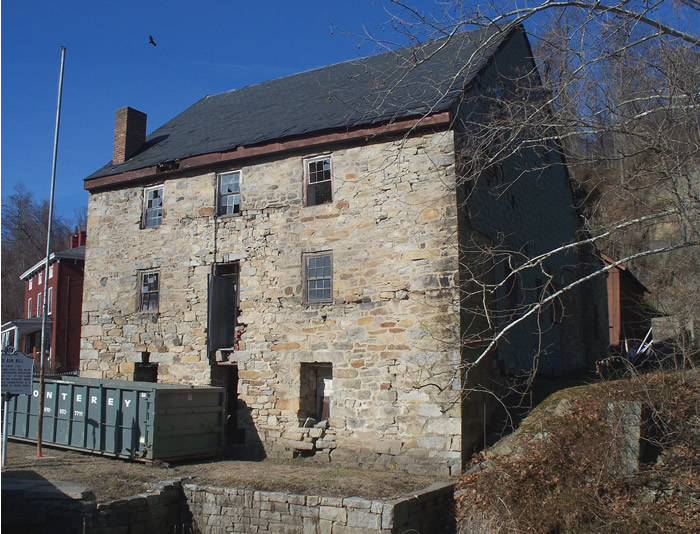
The town of Port Deposit, called Creswell's Ferry in 1812, was the source of granite, quarried from an area north of the mill beginning in 1789. The granite shippers made use of the Pennsylvania/Maryland Canal, the first artificail inland waterway in the United States, to ship the granite north for a distance of ten miles to just below the Pennsylvania state line. Port Deposit granite was in great demand from the 1830's through the early 1900's. Tobacco was also shipped south from northern points to Port Deposit to be loaded onto ships for crossing the Chesapeake Bay to farther ports of call.